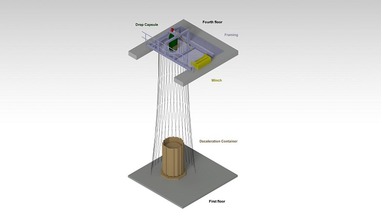 Issue #1(7) 2016
Issue #1(7) 2016
The planned drop tower at Baylor University strives for 1.5 seconds of high-quality microgravity environment targeting researchers as well as industry. Its design combines lessons learned as well as a low-cost design approach and is built on international collaboration between universities on two continents.
 Issue #1(7) 2016
Issue #1(7) 2016
The premise of this article is at the same time modest and rather shameless. It is modest as I, as a philosopher-mathematician, want to ask questions and not necessarily provide any of the answers...
 Issue #1(7) 2016
Issue #1(7) 2016
Mankind’s activities in outer space have become increasingly numerous and complex and, as we approach the fiftieth anniversary year of the 1967 Outer Space Treaty, now provide vital space-based infrastructure for a diverse number of applications.
 Issue #1(7) 2016
Issue #1(7) 2016
In the final year leading up to Rosetta’s approach to comet 67P/ChuryumovGerasimenko and subsequent landing of Philae, an outreach campaign was initiated and run by the European Space Agency (ESA) using a variety of media and techniques.
 Issue #1(7) 2016
Issue #1(7) 2016
Outer space as a potentially hazardous area of human activities regularly sends us warnings - like the notorious meteorite shower in Chelyabinsk - that we are not ready to respond quickly and efficiently to challenges from space.
Space is often described as a risky business. This characterisation generally focuses on the technical aspects of the industry: the challenges of designing and building systems to operate in extreme environments with little to no potential for repair; the hazards of launch; the risks of component and software faults.
How do you fly spacecraft to rendezvous with a comet’s nucleus? Back in 1996 when the mission operations preparation activities for the Rosetta mission started at the European Space Operations Centre (ESOC), no one had an answer to this question.
Often described as the ‘third industrial revolution’ and compared to the Internet with respect to its disruptive impact on our day-to-day life.
Most nations prefer the concept of greater freedom to that of expansive restrictions when it comes to rules governing the realm of space activities.
With companies announcing they intend to place private encampments on the Moon and mine asteroids, space mining is quickly moving from the theoretical to the practical.